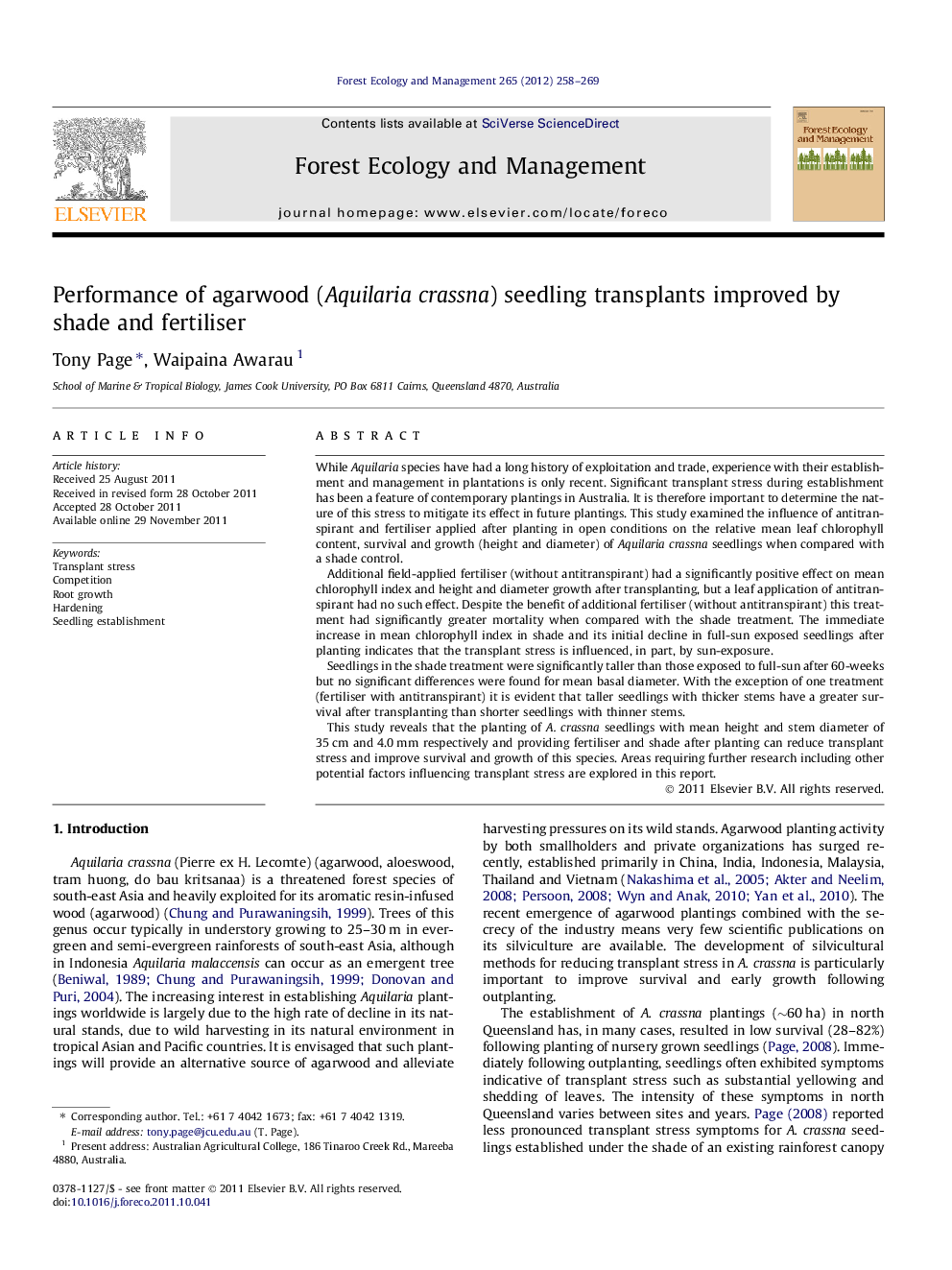| کد مقاله | کد نشریه | سال انتشار | مقاله انگلیسی | نسخه تمام متن |
|---|---|---|---|---|
| 87579 | 159256 | 2012 | 12 صفحه PDF | دانلود رایگان |

While Aquilaria species have had a long history of exploitation and trade, experience with their establishment and management in plantations is only recent. Significant transplant stress during establishment has been a feature of contemporary plantings in Australia. It is therefore important to determine the nature of this stress to mitigate its effect in future plantings. This study examined the influence of antitranspirant and fertiliser applied after planting in open conditions on the relative mean leaf chlorophyll content, survival and growth (height and diameter) of Aquilaria crassna seedlings when compared with a shade control.Additional field-applied fertiliser (without antitranspirant) had a significantly positive effect on mean chlorophyll index and height and diameter growth after transplanting, but a leaf application of antitranspirant had no such effect. Despite the benefit of additional fertiliser (without antitranspirant) this treatment had significantly greater mortality when compared with the shade treatment. The immediate increase in mean chlorophyll index in shade and its initial decline in full-sun exposed seedlings after planting indicates that the transplant stress is influenced, in part, by sun-exposure.Seedlings in the shade treatment were significantly taller than those exposed to full-sun after 60-weeks but no significant differences were found for mean basal diameter. With the exception of one treatment (fertiliser with antitranspirant) it is evident that taller seedlings with thicker stems have a greater survival after transplanting than shorter seedlings with thinner stems.This study reveals that the planting of A. crassna seedlings with mean height and stem diameter of 35 cm and 4.0 mm respectively and providing fertiliser and shade after planting can reduce transplant stress and improve survival and growth of this species. Areas requiring further research including other potential factors influencing transplant stress are explored in this report.
► Aquilaria seedlings experience transplant stress after outplanting.
► Transplant stress is influenced, in part, by sun-exposure.
► Field-applied fertiliser can mitigate effects of transplant stress.
► Tall seedlings with thick stems have an improved survival rate after transplanting.
Journal: Forest Ecology and Management - Volume 265, 1 February 2012, Pages 258–269